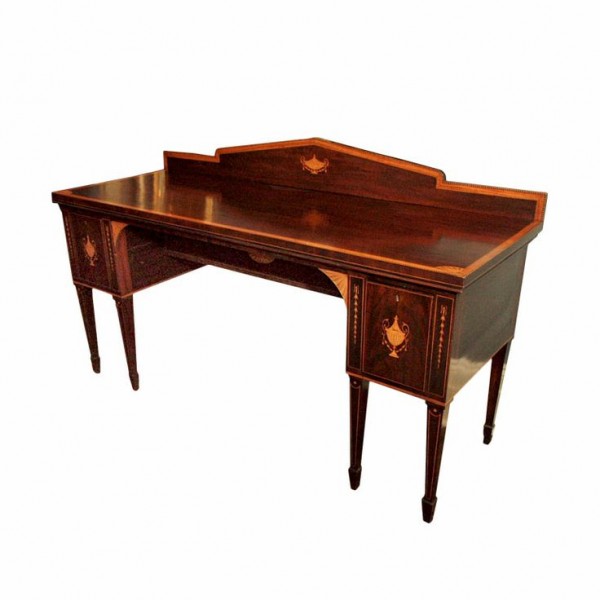For this installment of the History of Furniture, I propose a look at a style known as Sheraton, based on the work of Thomas Sheraton, an English writer and furniture designer who lived from 1751 to 1806. He was trained as a cabinet (furniture) maker but is best known as the author of many volumes illustrating what came to be known as the Sheraton Style, starting in 1791 with The Cabinet Maker's and Upholsterer's Drawing Book.
Scholarly sources put the start of the Sheraton Style at either 1780 or 1790 (Wiki splits the difference and cites 1785) but most agree that it saw its end in 1820. As I have said before in this series, if you want to discover why a certain style or movement looks the way it does, you simply need to look at the styles immediately preceding it and you will see that, generally, the style is a reaction to and against its antecedent. And what came before this period was Baroque and Rococo, a highly detailed, heavily decorated, and dizzyingly ornamented style championed by Louis XV. When Louis XVI took over, tastes turned from such sinuous ornamentation--or rather I should say tastes returned to something sleeker, cleaner: Classicism.
This Neo-Classicism and the reign of Louis XVI ran from 1774 - 1793. As you can see by all the dates involved, Sheraton was simply following the fashion of the day. So Sheraton (as well as some other styles around and overlapping Sheraton, like Directoire--previously here--and Empire--previously here--in France, and the Federal style in the United States which saw a tremendous amount fo Sheraton-style furniture) embraced the silhouettes and motifs of ancient Greece and Rome, all based on symmetry and the straight line. Chair and sofa legs are straight, not the old cabriole shape of the past. They were round, sometimes slightly tapered, often with fluting like a Greek column--although it is not uncommon to see splayed back legs. The overall sense of Sheraton furniture is one of elegant, well-proportioned geometric shapes commonly made out of satinwood but mahogany and beech were also popular. Seat backs for chairs and settees are usually rectilinear. Pieces are decorated with small, low-relief carvings consisting of swags, lyres, ribbons, festoons, rams' heads, urns and flowers in the neoclassical tradition or inlaid with parquetry and veneers of exotic woods.
Happy designing!
Monday, February 17, 2025
Monday, February 10, 2025
The Snaps Collection from Hubbardton Forge
I am always searching for unique lighting options for clients, and Hubbardton Forge has just released a new collection that fits the bill. Called Snaps, the configurable design features differing lengths of leather strapping (in brown, black, or white!) punctuated by round LED lights housed in alabaster, all held together with riveted snaps! As you can see below, it looks great in many settings and provides a great sculptural focal point.
I am excited to use the Snaps Collection in a project! Contact me if you want to include Snaps in your remodeled space.
Happy designing!
I am excited to use the Snaps Collection in a project! Contact me if you want to include Snaps in your remodeled space.
Happy designing!
Subscribe to:
Comments (Atom)

















